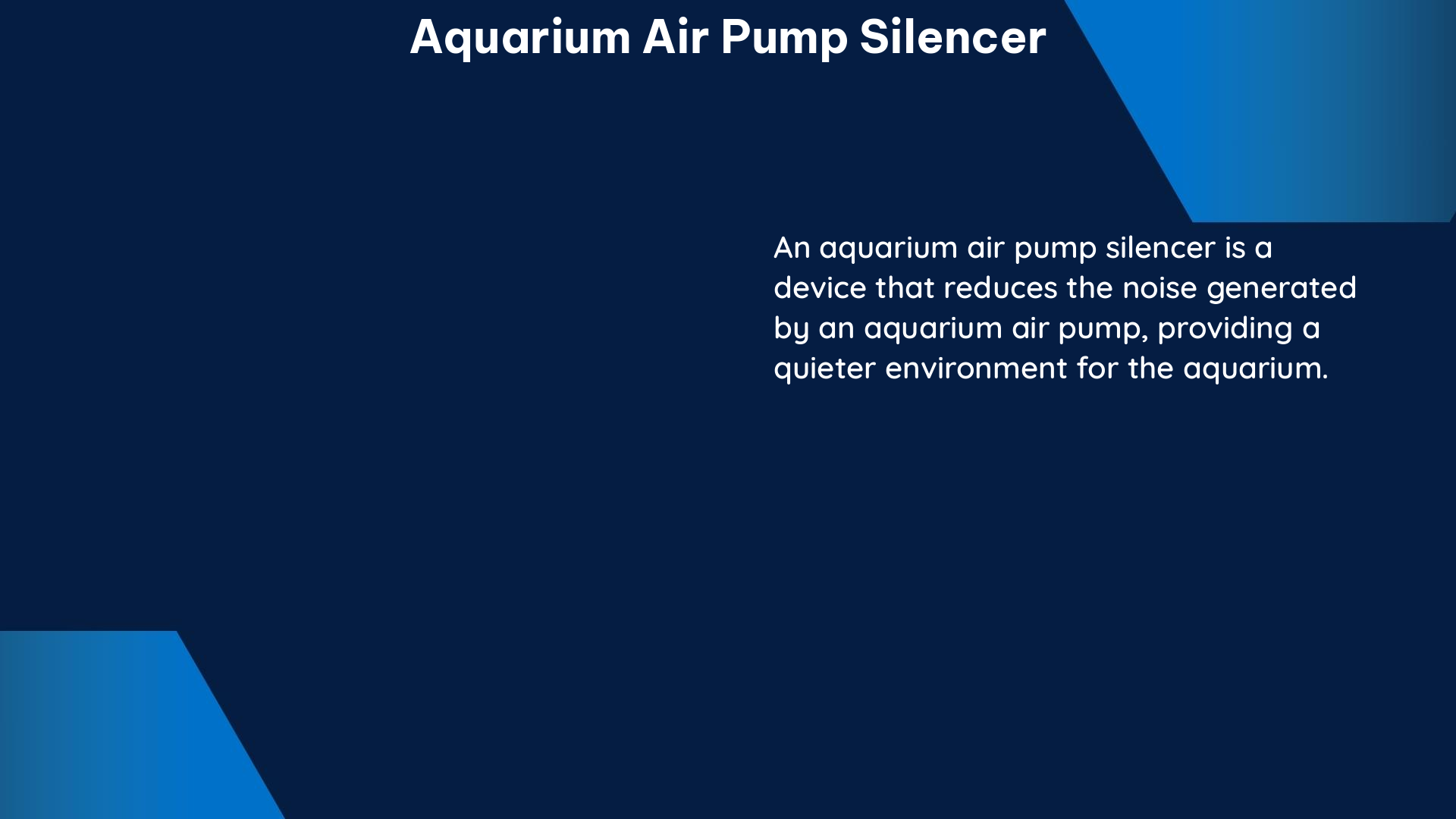An aquarium air pump silencer is a crucial accessory for any aquarium enthusiast looking to create a peaceful and serene environment for their underwater inhabitants. These devices are designed to reduce the noise produced by air pumps, which can be a significant source of disturbance in an otherwise tranquil aquarium setup.
Understanding Air Pump Noise Levels
The noise level of an air pump can be quantified in decibels (dB), a logarithmic scale used to measure sound intensity. The quieter the air pump, the lower the decibel level. Typical air pumps can range from 40 dB to 70 dB, with the lower end of the spectrum being more desirable for aquarium use.
To measure the noise level of an air pump, you can use a sound level meter or a smartphone app that can measure decibels. It’s important to note that the noise level can be affected by factors such as the pump’s size, the material it’s made of, and the distance between the pump and the measurement point.
Measuring Air Pump Airflow

Knowing the airflow of your air pump is crucial when selecting or designing a silencer, as it will determine the appropriate size and configuration of the silencer. There are several methods to measure the airflow of an air pump:
-
Flow Sensor Components: These specialized devices can measure pressure differentials and various flow rates. They can be configured with a power source and connected to a computer for data collection, but they require some technical knowledge to set up and use.
-
Manual Measurement: Place the output of the air pump in a tank of water with a measuring cup upside down and filled with water. Time how long it takes to fill the measuring cup with bubbles, and then calculate the flow rate in liters per minute (L/min).
-
Pressure Differential Measurement: Install a simple orifice in the discharge hose and connect it to a manometer. The pressure differential across the orifice can be used to calculate the flow rate using fluid dynamics principles.
It’s important to note that the airflow of an air pump can also be affected by the depth of the air exit. For example, an air pump with a flow rate of 4 L/min at the surface may have a flow rate of only 2 L/min at a depth of 80 cm.
Silencing Techniques
There are several methods to silence an air pump and reduce the noise it produces:
-
Redirecting Air Intake: Use a vinyl tube to redirect the air intake to the outside of the aquarium. This can help reduce noise and CO2 levels within the aquarium.
-
External Air Pump: Use a small air pump to draw air from outside the aquarium and route it to the air silencer on a skimmer. This can help avoid any restriction to the skimmer’s air needs and build a carbon filter chamber in line of the air pump to avoid any outside air contaminants reaching the skimmer.
-
Sound-Absorbing Materials: Enclose the air pump in a housing made of sound-absorbing materials, such as foam or rubber. This can help reduce noise by absorbing sound waves and preventing them from escaping the silencer.
-
Custom Venturi Design: Create a custom venturi with a differential pressure sensor to provide pressure data over time and allow for more precise control of the airflow. This approach requires some knowledge of fluid mechanics and electronics but can result in a more efficient and customizable silencer.
Choosing the Right Silencer
When selecting an air pump silencer, consider the following factors:
- Decibel Rating: Look for silencers with a low decibel rating, typically below 40 dB, to ensure a significant reduction in noise.
- Airflow Compatibility: Ensure the silencer is compatible with the airflow requirements of your air pump, as measured in L/min.
- Size and Material: The size and material of the silencer can affect its effectiveness and compatibility with your aquarium setup.
- Additional Features: Some silencers may offer additional features, such as adjustable flow control or built-in air filters, which can further enhance their performance.
By considering these technical specifications and factors, you can make an informed decision when choosing an air pump silencer for your aquarium setup.
DIY Aquarium Air Pump Silencer
Creating a DIY aquarium air pump silencer can be a rewarding and cost-effective project. Here are some key considerations:
-
Sound-Absorbing Materials: Use materials like foam or rubber to create a barrier around the air pump, which can help absorb sound waves and reduce noise.
-
Custom Venturi Design: Construct a custom venturi with a differential pressure sensor to monitor airflow and provide more precise control. This approach requires some knowledge of fluid mechanics and electronics.
-
Airflow Measurement: Utilize the manual measurement method with a measuring cup or the pressure differential measurement using an orifice and manometer to determine the airflow of your air pump.
-
Compatibility and Customization: Ensure the DIY silencer is compatible with your air pump’s airflow requirements and can be customized to fit your specific aquarium setup.
By following these guidelines and leveraging your technical knowledge, you can create a highly effective and personalized aquarium air pump silencer that meets the unique needs of your aquarium.
Conclusion
Aquarium air pump silencers are essential accessories for creating a peaceful and serene environment for your underwater inhabitants. By understanding the noise levels, airflow, and silencing techniques, you can make an informed decision when selecting or designing an air pump silencer that meets your specific requirements. Whether you choose a pre-made silencer or opt for a DIY solution, the key is to prioritize technical specifications and customization to achieve the desired noise reduction and airflow performance.
References:
– Measuring Air Pump Airflow Using a Flow Sensor
– Silencing an Air Pump with a Vinyl Tube
– DIY Air Pump Silencer Techniques
– Pressure Differential Measurement for Airflow
